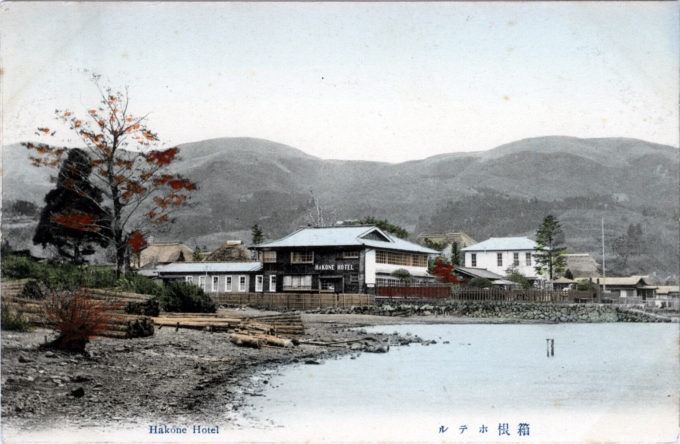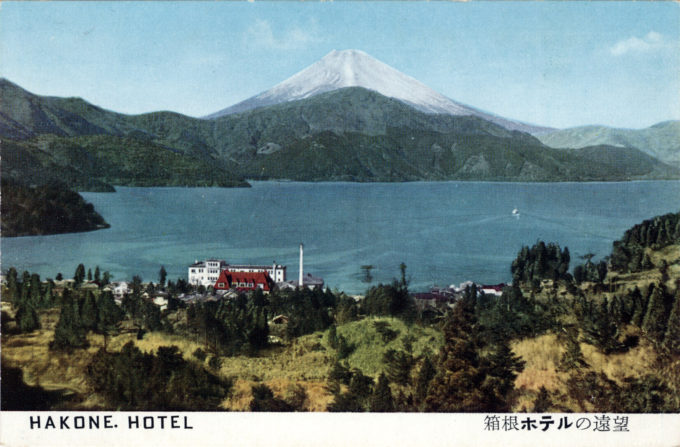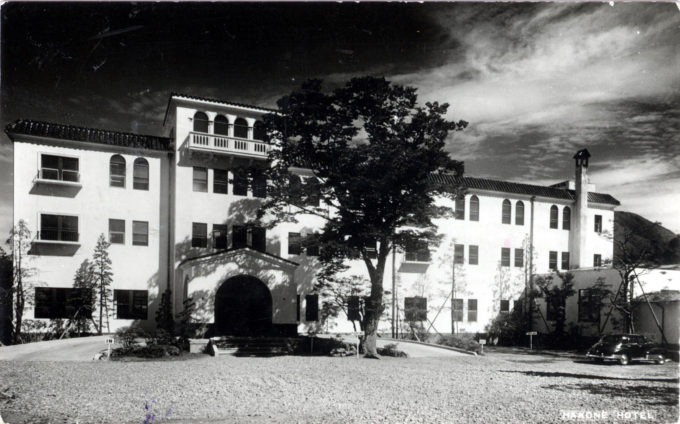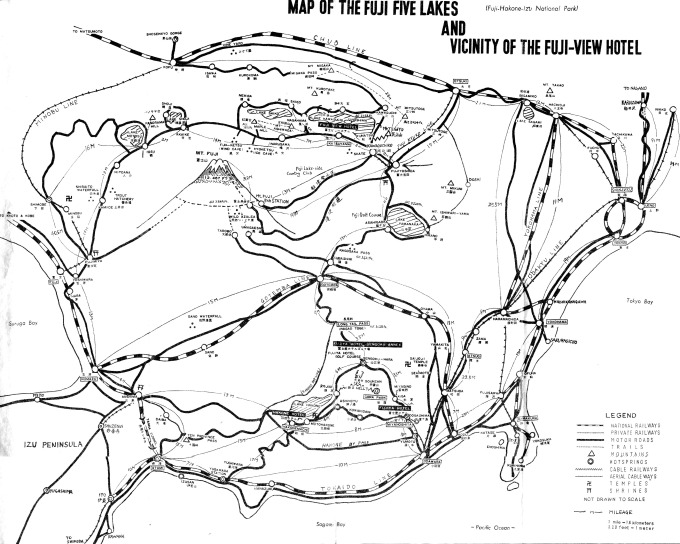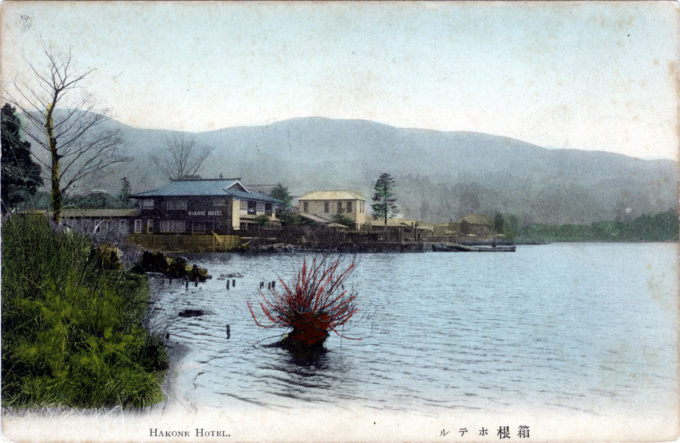
The original Hakone Hotel structure, c. 1910, on the shore of Lake Ashi. It was first known as Hafuya Hotel before being bought by the Fujiya Hotel, Miyanoshita, and renamed. This structure would be destroyed in 1923 by the Great Kanto earthquake but rebuilt (see below).
See also:
Hafuya Hotel, Hakone, c. 1900
Lake Hakone, c. 1920
Matsuzaka Hotel, Ashinoyu, c. 1910
“We remounted our kago chairs and proceeded to the hotel and there at last, above the nearer green mountains at the opposite side of the lake, rose Fuji in her splendour, a few soft white veils of cloud just touching her half way up. The snow cap extended a long way down, streaking out in long pointed arrows, the ribs of dark volcanic rock making the dark streaks between. It was a truly glorious sight – the lake in front ,the dark green rounded hills beyond, and then the sharp cone of Fuji flashing up into the sky.
“We went to the Hakone Hotel and dined, feasting our eyes upon the mountains more than our lips upon the viands, though the latter included fine mountain trout caught in the lake at our feet. So an hour of delight passed. There are steaming springs and geysers in the vicinity, but I cared nothing for them. Fuji, the gracious Fuji, now drawing the laces of her clouds around her head and veiling her bosom with a heavier wrap of darker clouds, was enough. We had seen her beauty, bare and virginal.”
– Japan at First Hand: Her Islands, Their People, the Picturesque, the Real, by Joseph Ignatius Constantine Clarke, 1918
“Continuing, we took many short cuts very steep and often moist till the summit was reached – a plateau infested with sulphur springs that made their presence known. Here, we passed through a dreary settlement, a minor bathing resort, then slipped down into Hakone, a little down-at-the-heels village on the shore of a beautiful lake set among smoothly rounded hills and mountains; with Fuji in the distance, the summit veiled as usual though streaks of snow were visible lower down through the clouds
“After tiffin at the Hakone Hotel, a half-and-half sort of country inn with a French bill of fare, Japanese baths, and a few pieces of American furniture, we strolled about rather aimlessly and by chance lit upon a tiny shop where inlaid cabinet work is done. The region it seems is famed for craft of this kind. It was a one room affair. A man sat on the floor (benches are rare in Japan), waxing a bit of inlaid work and polishing it vigorously, using one bare foot to steady the piece.
“Many of the Japanese artisans are practically four-handed. Facing him sat his wife, not working but bringing him cheer. Between the two, a fire box for comfort, presumably, though perhaps of service in melting wax. A kitten dozed on the workman’s knee. By his side was a young son or apprentice, also polishing. The workers did not pause to welcome us but kept steadily at it.”
– Over Japan Way, by Alfred Marshall Hitchcock, 1917
Post-earthquake Hakone Hotel
- Hakone Hotel, rebuilt after the 1923 earthquake, c. 1940, within view of Mt. Fuji.
- Hakone Hotel, Hakone, c. 1950. During the Occupation era (1945-1952), the Hakone Hotel was requisitioned by Allied forces for rest-and-recreation use.


